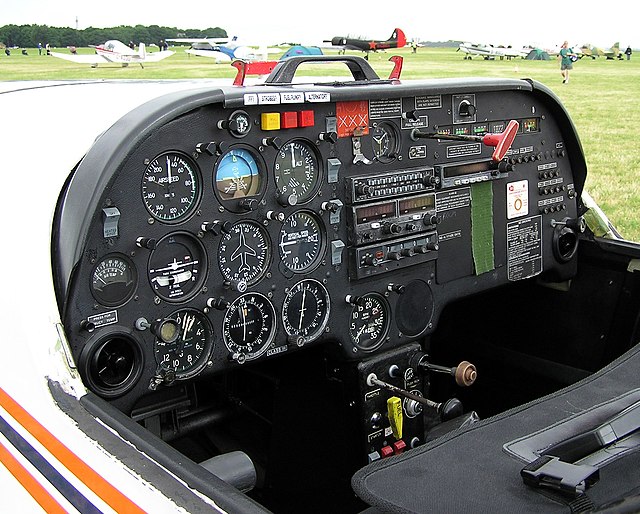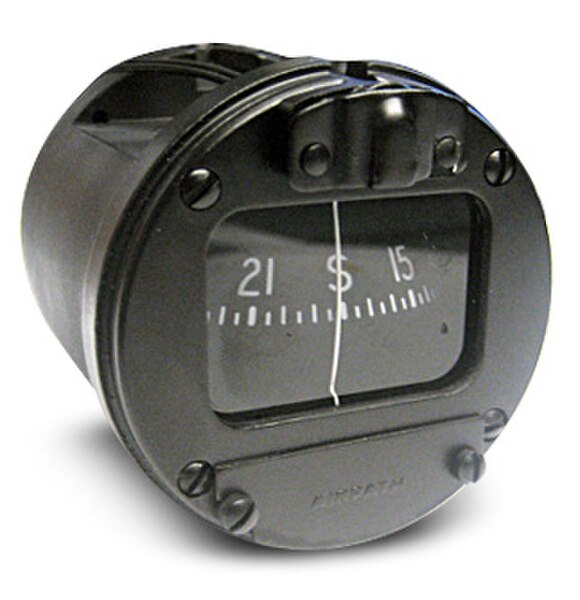The attitude indicator (AI), formerly known as the gyro horizon or artificial horizon, is a flight instrument that informs the pilot of the aircraft orientation relative to Earth's horizon, and gives an immediate indication of the smallest orientation change. The miniature aircraft and horizon bar mimic the relationship of the aircraft relative to the actual horizon. It is a primary instrument for flight in instrument meteorological conditions.
Soviet artificial horizon AGP-2, tilted left, and showing the aircraft nose down and banked to the left. The white "horizon" line always aligns with the wings, not with the horizon seen out of the cockpit
Image: VMS Artificial Horizon
Flight instruments are the instruments in the cockpit of an aircraft that provide the pilot with data about the flight situation of that aircraft, such as altitude, airspeed, vertical speed, heading and much more other crucial information in flight. They improve safety by allowing the pilot to fly the aircraft in level flight, and make turns, without a reference outside the aircraft such as the horizon. Visual flight rules (VFR) require an airspeed indicator, an altimeter, and a compass or other suitable magnetic direction indicator. Instrument flight rules (IFR) additionally require a gyroscopic pitch-bank, direction and rate of turn indicator, plus a slip-skid indicator, adjustable altimeter, and a clock. Flight into instrument meteorological conditions (IMC) require radio navigation instruments for precise takeoffs and landings.
The cockpit of a Slingsby T-67 Firefly two-seat light airplane. The flight instruments are visible on the left of the instrument panel
Six basic instruments in a light twin-engine airplane arranged in a "basic-T". From top left: airspeed indicator, attitude indicator, altimeter, turn coordinator, heading indicator, and vertical speed indicator
Image: Aero Magnetic Compass





